It’s not a secret that in 2023, a certain number of things in stores are in great demand these days, and survival gear is no exception. And the most important item of them all is toilet paper. This is an extraordinary thing that is necessary for all people, no matter your financial situation, interests, and what you eat for lunch. Everyone at least once in their life had such a situation when toilet paper ran out at the most unfavorable moment. And just for this case, you need to have a plan B.
It could end for a billion reasons. Of course, this problem is much easier to solve when you are at home. But what if you’re on a hike? Or you’re a disaster survivor? A real prepper must be ready for any outcome. Hence, our article will help you find answers to pressing questions and give you a couple of ideas and skills on how not to get screwed up due to the toilet paper shortage.
Most Popular Solutions
1. Napkins and wet wipes
The safest method to replace toilet paper is with baby wipes and paper handkerchiefs. The advantages of wet wipes are that they cleanse more gently and effectively. Paper tissues and napkins are soft and delicate, which means they are the closest alternative to a regular toilet paper roll. The only disadvantage that may arise is that such paper pieces will be needed twice as much as traditional ones because usually, such papers are fragile.
2. Paper
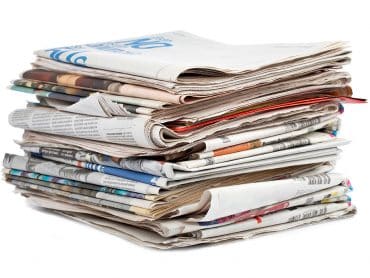
The first thing that works perfectly as a solution is to take any paper: sheets of notebooks, printer paper, and paper towels are excellent. Newspapers, phone books, and magazines are also good alternatives, but why you shouldn’t use them? With books, the answer is simple because it’s a pity to spoil good educational material. But as with newspapers, the situation is the same; words and pictures issued by a printing house can leave a mark on you. Therefore, it is best to take blank sheets.
Remember, it’s recommended not to flush down paper wipes; instead, you need to use the trash can.
Advanced Options
1. Sponge
In ancient times people used special sticks with an attached wet sponge soaked in vinegar or salt water instead of toilet paper. This is very unhygienic these days because now we know that these methods of using sponges pick a lot of bacteria quickly, which increases the risk of contracting infections. But if you nevertheless decide to test this method for yourself and experience part of the history in practice, then it would be best to soak such a sponge in boiling water or diluted bleach; otherwise, at least thoroughly wash it before using it again.
2. Rocks
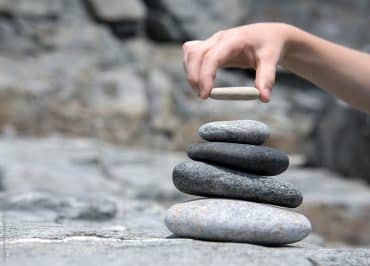
For a better experience of prepping the survival backpack and to get more knowledgeable in general, please, feel free to check out the article about planning your survival strategy.
3. Water
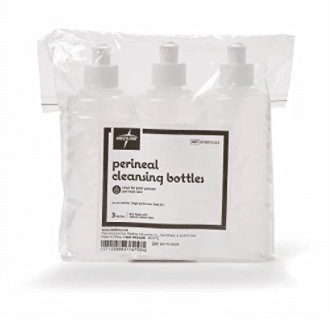
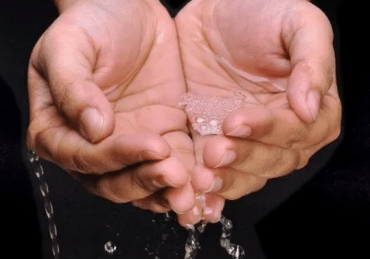
Water source itself is a natural method of getting clean, washing, and laundry. Toilet tissue is good to have, but having a toilet paper shortage shouldn’t be the cause for concern. It’s possible to live without toilet paper; people from many countries still do. Using water not only helps to wash a biologically important area of the body but also prevents the risk of infections when you see cardboard toilet paper rolls instead of toilet paper itself. To make your cleaning process more efficient, it’s best to be supplied with antibacterial soap that kills bacteria and gently cleanses sensitive skin.
4. Cloth and fabrics
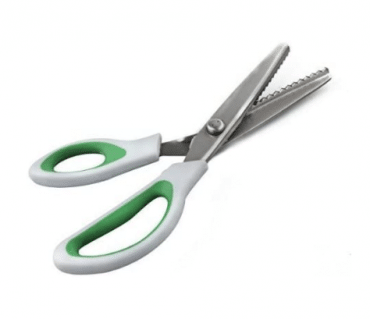
To be fully honest, cloth may not be as convenient in public toilets where they have enough toilet paper. But if you’re not in the public bathroom, it is a nice option that is also very eco-friendly. You can use your old cotton flannel as cloth diapers or special drip-dry fabrics. To cut into pieces, you’ll need to have special scissors (or dressmaking pinking shears) to make them stay whole without fraying.
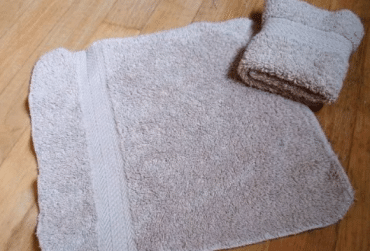
Read our article where we listed all of the simple survival things you need to have when packing the bag-out bag.
Outdoors Ideas
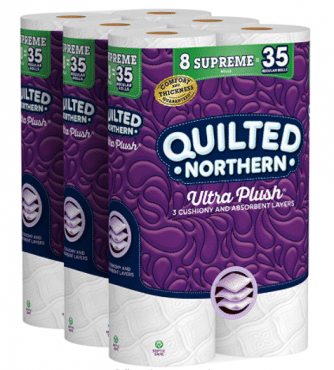
1. Maple Leaves
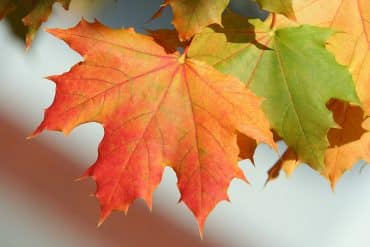
2. Corn Husks

3. Cottonwood Leaves
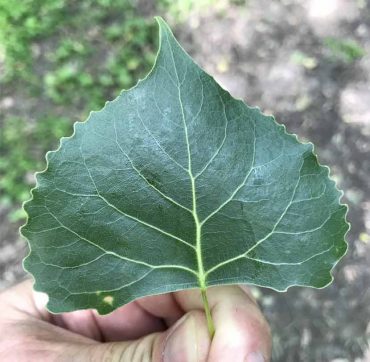
4. Large Leaved Aster
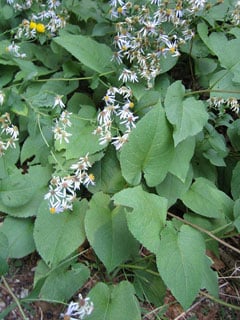
5. Mullein Leaves
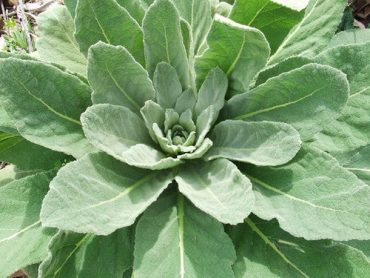
6. Hazelnut Leaves
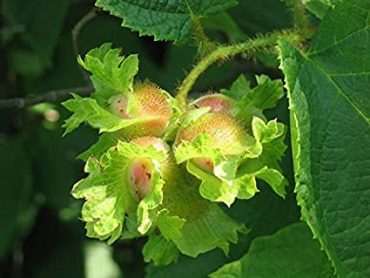
7. Thimbleberry Leaves
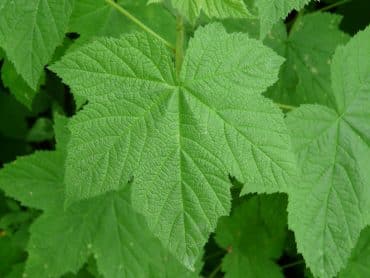
NB: Thimbleberry leaves are very easy to confuse with similar Devil’s Club ones. Moreover, Devil’s Club grows in the same place where Thimbleberry, so the likelihood of confusion increases with this fact. The good thing is, they are not poisonous. However, their stems and leaves are covered with sharp thorns, and it is highly discouraged to use this plant as an alternative to toilet paper.
8. Lettuce
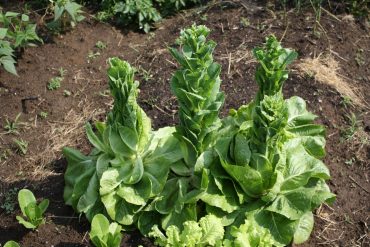
So using plant leaves as a substitute for toilet paper is very eco-friendly and wouldn’t cost a penny. Of course, the experience is not the same as with a bidet or normal toilets, but still, leaves are good cleaning material. But before using any plant to wipe yourself, we highly recommend you to gain experience in the ability to distinguish good from evil between different types of wild plants in practice. Please, make sure you know how poison sumac, poison ivy, and poison oak look like. Those plants and trees are a №1 danger you want to avoid.
Frequently Asked Questions (FAQ)
What do you do if you have no toilet paper?
Honestly, there are plenty of alternatives to toilet paper. You can easily use the cloth and reuse it as much as you want (but remember that you don’t want to flush the fabric to keep the tubing in good condition), or you can use a bidet to clean up the mess (ideally with soap or any detergent). If you find yourself in the wilderness without toilet paper, it is best to have a spray bottle or any other regular bottle filled with non-toxic water so that washing is safe. You can find more ideas by reading the full article above.
How much toilet paper should I store?
First, you need to determine for what purpose you use toilet paper (yes, it can be used not only for its intended purpose), how many people in your family, and how often you use the bathroom. It’s better to have a spare cheap toilet paper roll or wipes (baby wipes are the best, you can easily find them in any baby supply aisle or drug store). But the more, the better, right?
What is the best way to store toilet paper?
Moving away from the topic, there is no doubt that toilet paper is in every house. You can store it everywhere, and the main thing is that it should always be easy to reach. You can store all the toilet paper rolls in a storeroom, a bathroom cabinet, on a shelf, in ornamental baskets, or even on a toilet tank. It all depends on the size of your bathroom and your preferences. It often happens that elegant shelves with neatly folded toilet paper rolls are part of the bathroom decoration.


